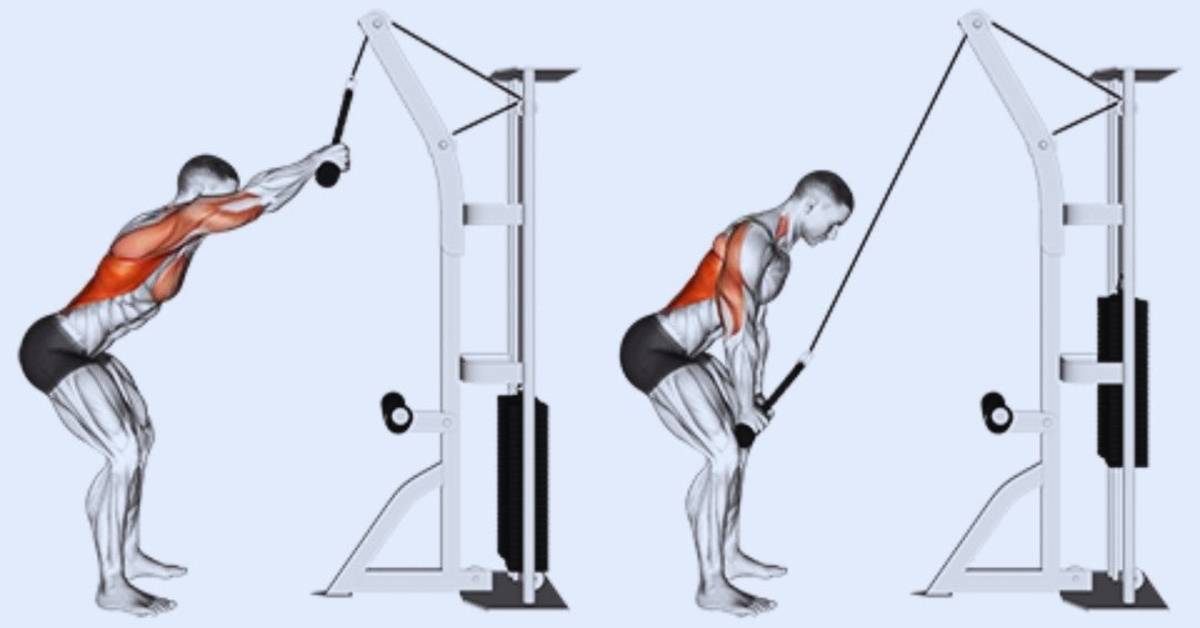If you’re looking for a powerful exercise to add to your workout routine, look no further than the pinch press. This exercise, which involves pressing two weight plates together, is a great way to work your chest, triceps, and shoulders. In this blog post, we’ll look at how to do the pinch press, the muscles worked, the benefits, and some alternatives you can try.
What is the Pinch Press?
The pinch press is an exercise that involves pressing two weight plates together in a vertical position. It’s a unique exercise that targets the chest, triceps, and shoulders like traditional pressing exercises don’t. The exercise can be performed with either standard weight plates or bumper plates, depending on your preference.
Pinch Press Muscles Worked
This exercise primarily targets the chest muscles but also engages the triceps, shoulders, and back muscles.
Pectoralis Major
The pectoralis major, commonly known as the pecs, are the primary muscles targeted during the Pinch Press exercise. The pecs are responsible for adduction, horizontal flexion, and internal rotation of the humerus, which is necessary for the pinching movement of the exercise.
Triceps Brachii
The triceps brachii muscles are located at the back of the upper arm and work with the pecs to extend the arm during the exercise.
Anterior Deltoids
The anterior deltoids, or the front head of the shoulder muscles, are responsible for shoulder flexion and internal rotation, which are required during the Pinch Press exercise.
Serratus Anterior
The serratus anterior muscles are located on the sides of the chest and are responsible for protracting the shoulder blades. They are also involved in stabilizing the scapulae during the Pinch Press exercise.
Upper Back Muscles
The upper back muscles, including the rhomboids, trapezius, and teres major, stabilize the shoulder blades during the Pinch Press exercise.
Benefits of Pinch Press Exercise
There are numerous benefits to be gained from the Pinch Press regarding your upper body. The following are some of the key benefits that can be derived from the exercise:
Increased Chest Strength and Size
The primary benefit of the Pinch Press exercise is increased chest strength and size. The exercise targets the pectoralis major muscles responsible for adduction, horizontal flexion, and internal rotation of the humerus. These movements are necessary for developing a solid and well-defined chest.
You can strengthen and grow your chest muscles by regularly performing the exercise and gradually increasing the weight. This can improve your overall upper body strength and appearance.
Improved Triceps Strength
The triceps brachii muscles, located at the back of the upper arm, work with the pecs to extend the arm during the Pinch Press exercise. Regularly performing the exercise can improve your triceps strength, enhancing your ability to perform other pushing exercises.
Increased Shoulder Stability
The Pinch Press exercise also engages the anterior deltoids and upper back muscles, including the rhomboids, trapezius, and teres major. These muscles are responsible for stabilizing the shoulder blades during exercise, which can improve shoulder stability and reduce the risk of shoulder injuries.
Improved Functional Fitness
The Pinch Press exercise is a compound movement that mimics real-life movements, such as pushing heavy objects or lifting heavy boxes. By performing this exercise regularly, you can improve your functional fitness, enhancing your ability to efficiently perform daily activities.
Versatility
The Pinch Press exercise can be performed with various equipment, including dumbbells, barbells, and kettlebells. This versatility lets you switch up your workout routine and target different muscle groups.
How to Perform Plate Pinch Press Exercise Correctly?
The Plate Pinch Press exercise is a variation of the traditional bench press that uses weight plates instead of barbells. This exercise is an effective way to improve grip strength and build upper-body muscle mass. Here is the step-by-step guide to Performing the Plate Pinch Press Exercise:
Step 1: Set up the weights
Begin by selecting two weight plates of equal size and weight. Place the plates together, flat sides facing each other, and grip the plates firmly with both hands. Ensure that your palms face each other and your fingers are wrapped around the edges of the plates.
Step 2: Get into the position
Put your feet firmly on the ground and lie down on a flat bench. Place the weight plates on your chest, keeping your elbows tucked at your sides.
Step 3: Press the weights
Slowly press the weight plates away from your chest, extending your arms until fully extended. Keep your wrists straight and your elbows tucked in throughout the exercise.
Step 4: Lower the weights
Lower the weight plates back to your chest in a controlled manner, keeping your elbows tucked in at your sides. Repeat for the desired number of repetitions.
Essential tips to follow While performing Plate Pinch Press Exercise
While the Plate Pinch Press exercise effectively improves grip strength and upper body muscle mass, it is essential to follow some important tips to ensure proper form and prevent injury. Here are some tips to follow while performing the Plate Pinch Press exercise:
Warm-Up Properly
Before starting any exercise, it is essential to warm up properly to increase blood flow and prepare your muscles for the workout. You can perform light cardio, such as jumping jacks or running in place, for a few minutes before starting the Plate Pinch Press exercise.
Use Proper Weight
When performing the exercise, using weight plates appropriate for your strength level is important. Starting with lighter weights and gradually increasing the weight as you become stronger can help prevent injury and improve your form.
Focus on Form
Maintaining proper form throughout the exercise is essential to maximize the benefits of the exercise and prevent injury. Keep your wrists straight, elbows tucked in, and your back flat against the bench.
Keep Your Breathing Steady
During the Plate Pinch Press exercise, keeping your breathing steady and controlled is vital. Inhale as you lower the weight plates towards your chest and exhale as you push the weight plates away from your body.
Avoid Overtraining
Overtraining can lead to injury and muscle fatigue. Giving your muscles time to rest and recover between workouts is important. Aim to perform the Plate Pinch Press exercise no more than two to three times weekly.
Common Mistakes to Avoid
This exercise can be effective when performed correctly, but it is essential to avoid common mistakes that can compromise your form and lead to injury. Here are some common mistakes to avoid during the Pinch Press exercise:
Incorrect Hand Position
One of the most common mistakes during the Pinch Press exercise is incorrect hand position. Keep your palms facing each other, with your fingers wrapped around the edges of the weight plates. Avoid using a too-wide grip, which can strain your shoulders and wrists unnecessarily.
Lifting Too Heavy
Lifting too heavy is another common mistake during the Pinch Press exercise. It is essential to start with lighter weights and gradually increase the load as your strength improves. Lifting too heavy can cause injury and compromise your form, leading to poor results.
Flaring your elbows out
Another common mistake is flaring your elbows to the sides during the exercise. This can place unnecessary strain on your shoulders and lead to injury. Instead, keep your elbows tucked in at your sides throughout the exercise.
Arching your back
Arching your back during the Pinch Press exercise can also strain your lower back unnecessarily and lead to injury. Instead, keep your back flat on the bench throughout the exercise.
Using momentum
Using momentum to lift the weight plates during the Pinch Press exercise can reduce the effectiveness of the exercise and increase your risk of injury. Instead, focus on using controlled, slow movements to lift and lower the weight plates.
Pinch Press Exercise Alternatives
While it is a practical exercise, it may not be suitable for everyone. Here are some alternative exercises that you can do instead of the Pinch Press:
Incline Plate Press
The Incline Plate Press is a variation of the Plate Press exercise that targets the upper chest muscles.
It is performed on an incline bench at a 30-45 degree angle. The exercise involves pressing two weight plates with the flat sides facing each other while keeping your elbows tucked in at your sides and palms facing each other. Slowly press the plates away from your chest until your arms are fully extended, and then lower them back to your chest in a controlled manner.
Dumbbell Hex Press
The Dumbbell Hex Press is an exercise that targets the chest muscles and is performed with dumbbells.
To perform the exercise, lie on a bench and hold a pair of dumbbells with the heads touching each other. Lower the dumbbells down towards your chest, keeping your elbows tucked at your sides. Then, press the dumbbells up until your arms are fully extended. This exercise emphasizes the inner chest muscles and can be an effective alternative to the traditional bench press.
Bench Press
There is no doubt that bench pressing is one of the best exercises for targeting the chest, triceps, and shoulders as well. This exercise is similar to the Pinch Press but is performed with a barbell instead of weight plates. The bench press allows you to lift heavier weights and can help you build more upper-body strength.
Push-Ups
As a bodyweight exercise, push-ups are an excellent way to work out the chest, shoulders, and triceps. They can be performed anywhere and require no equipment. Push-ups are a great alternative to the Pinch Press if you cannot access weights or a gym.
Read Also
Humble Row, How to, Muscles Worked, Benefits, Alternatives
Lat Pullover: How to, Muscles Worked, Mistakes, Variations, Alternatives









